Few subjects bring up as much remembered pain and anxiety as math classes. The confusing symbols, the difficult procedures and the dreaded graphs and charts.
A few people are now even suggesting that learning math can be a traumatic experience, something survived, rather than learned.
The painful history many people have with math is a shame, because math is incredibly useful. Many of the best careers are coming out of STEM fields, and rely on understanding math. Understanding the news and world events, is increasingly becoming a lesson in statistics. Finally, math, properly understood, allows you to solve many of your own problems.
In this article, I’d like to explain how you can teach yourself any kind of math, whether it be statistics, algebra or algorithms.
Step One: Start with an Explanation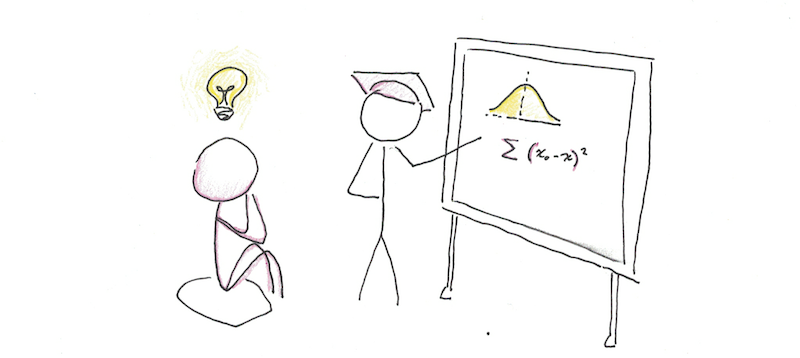
The first step to learning any math is to get a first-pass explanation of the topic.
There are many places where you can get this information. Some good resources that cover a huge swath of topics are:
- KhanAcademy – Huge, free resources of videos on nearly every math topic
- MIT OCW – These start at the university level, but they handle a lot of complicated math
- Coursera – Many full math classes
In addition, there are also specialized resources. These tend not to cover every conceivable topic, but they are often more entertaining, intuitive and helpful for those that they do:
- BetterExplained – Great articles giving intuitions behind calculus, algebra, exponentials and more
- 3Blue1Brown – Excellent YouTube videos exploring mathematical concepts in-depth
- Numberphile – Conversations with mathematicians about interesting math topics
Wherever you get your explanation, your first step is to watch it once, so that you feel you understand the basics of how it works.
What If I Don’t Understand the Explanation?
If you watch the explanation, but you didn’t understand it, there are two possible problems:
- You’re lacking some prerequisites for understanding this piece of math. That means you need to back up and go through it again. If it feels like it “went too fast” or you don’t know what the teacher is doing, you may need to go back a few lessons and learn those better before proceeding.
- You’re trying to cover too much without going onto practice. A good pattern is to watch a chunk of explanation and then try it yourself. If you only watch, but never practice, that’s a bit like watching videos on skiing and never hitting the slopes. Eventually the explanations will stop making sense because you’ll lack firsthand experience.
Try this: Watch an explanation once, in full, as your starting point.
Step Two: Do Practice Problems
Math isn’t something you watch and memorize, but something you do.
If you spend all your time watching videos, and then get to a set of problems, you may find it really hard to apply your math knowledge. This can lead to the feeling that you’re “bad at math” even though the problem is just that you’re using a lousy method to learn it.
You can fix this by getting to doing problems as soon as possible. A good problem should feel challenging, but not impossible. If you see the solution and don’t even understand how they got it, chances are you’re going too fast—go back and learn some of the basics before moving on.
What if I Don’t Have Problems to Solve?
If you lack provided problems, there’s a few things you can do:
- Work through the problems done in the explanation, but without looking at the answer.
- Create your own problems and try to solve them.
- Try to prove concepts in the class. This is an advanced technique, but it is essential for truly grasping more complicated math.
Try this: After watching your explanation, do enough problems to feel comfortable that you understand the procedure.
Step Three: Know Why The Math Works
Having an intuitive grasp is very important for math in a way that it isn’t for other subjects. While having an intuition for vocabulary words in a foreign language can help, they still need to be memorized. However, memorizing math can be dangerous if it causes you to learn it without understanding.
The next step is to convince yourself that you know why the math works. My favorite technique for doing this is the Feynman Technique, which I demonstrate here:
The Feynman Technique takes some time, so you don’t need to apply it fully to every single facet of every math problem you face. Rather, apply it selectively on the most important concepts and those that seem confusing to you, despite sufficient practice.
Try this: Identify the core concepts in the math you’re learning, and use the Feynman Technique to convince yourself you understand them.
Step Four: Play with the Math
Practice is good, understanding is better, but playing with math is best.
Once you have solved some questions provided to you and convinced yourself you understand them, a natural extension of this is to try to play with the math you’ve been given. How do things change when you try changing the numbers or apply it to different problems?
For example, let’s say you just recently learned how to calculate compound interest. You can do the simple interest calculations on your own, and you understand why they work. How could you play with this math?
- You could see what happens as the rate of compounding increases.
- What would happen if interest were negative?
- You could try to calculate your own savings if you invested them at different rates.
- Try imagining how much of a mortgage you pay in interest, versus principal.
Excel is a good way to play around with math, since you can put the formulas in directly, without needing to do as much algebra or repeating calculations.
Try this: Take a topic of math you’ve learned recently and see how you could change the variables, apply it to different things and modify the formulas.
Step Five: Apply the Math Outside the Classroom
Ultimately, the goal for learning math should be to use it, not merely pass a test. To do that, however, you need to break your understanding free of the textbook examples and apply it to real world situations.
This is more difficult than just solving a problem. When you solve a problem, you will start to memorize the pattern of the solution. This often allows you to solve problems without really understanding the principles behind how they work.
Applying math to real life, in contrast, requires recognizing the situation, translating it into math and then solving the problem you’ve created. This is strictly harder than solving problems, so if you want to be able to actually use what you learn, you need to practice this.
Try this: Take a topic you’ve learned recently in math and try to find a real-life situation where you could calculate it, using your own numbers or estimates if those aren’t available.
This All Sounds Like Too Much Work!
Doing all these five steps on every single thing you learn in math is going to be time consuming. That’s fine, you don’t need to do this for every little thing you need to learn.
Instead, think of this like a progress bar. Every math concept you learn can go from steps one through five, deepening your knowledge and increasing the usefulness of the math each time. Some concepts will be important enough that you’ll want to apply them thoroughly. Others will be infrequent enough that just watching the explanation is all the time you can spare.
In particular, you should try to focus on the most important concepts for each idea. Math tends to be deep, so often in a full semester class, there may only be a handful of really big ideas, with all the other ideas being simply different manifestations of that basic concept.
Most first-year calculus courses, for instance, all center around the concept of a derivative, with everything being taught merely being different extensions and applications of that core idea. If you really understand what a derivative is and how it works, those other pieces will be much easier to learn.


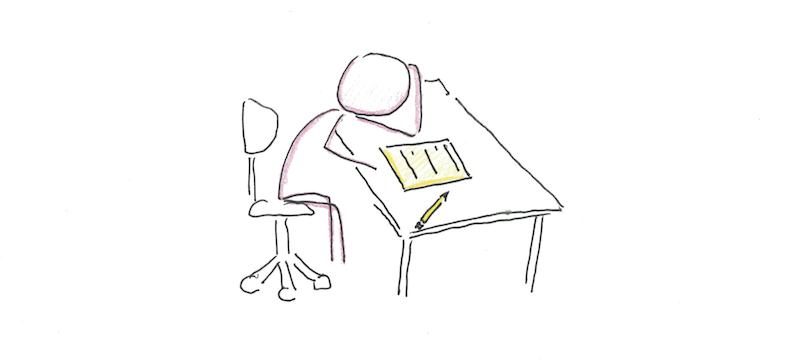
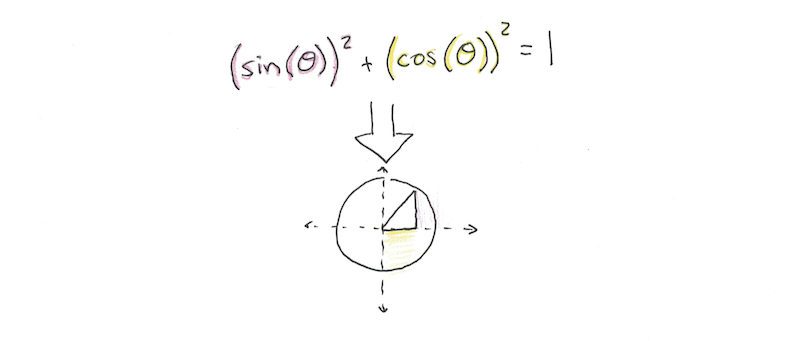
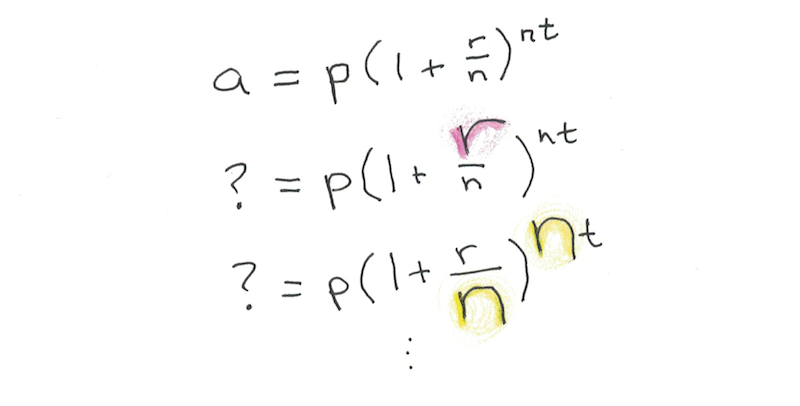
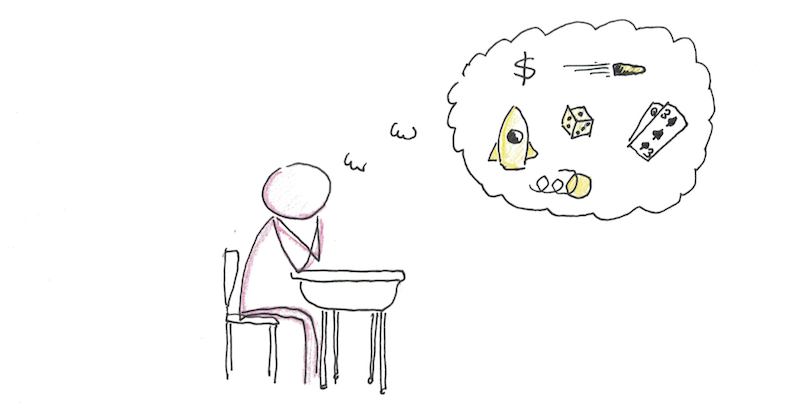
 I'm a Wall Street Journal bestselling author, podcast host, computer programmer and an avid reader. Since 2006, I've published weekly essays on this website to help people like you learn and think better. My work has been featured in The New York Times, BBC, TEDx, Pocket, Business Insider and more. I don't promise I have all the answers, just a place to start.
I'm a Wall Street Journal bestselling author, podcast host, computer programmer and an avid reader. Since 2006, I've published weekly essays on this website to help people like you learn and think better. My work has been featured in The New York Times, BBC, TEDx, Pocket, Business Insider and more. I don't promise I have all the answers, just a place to start.